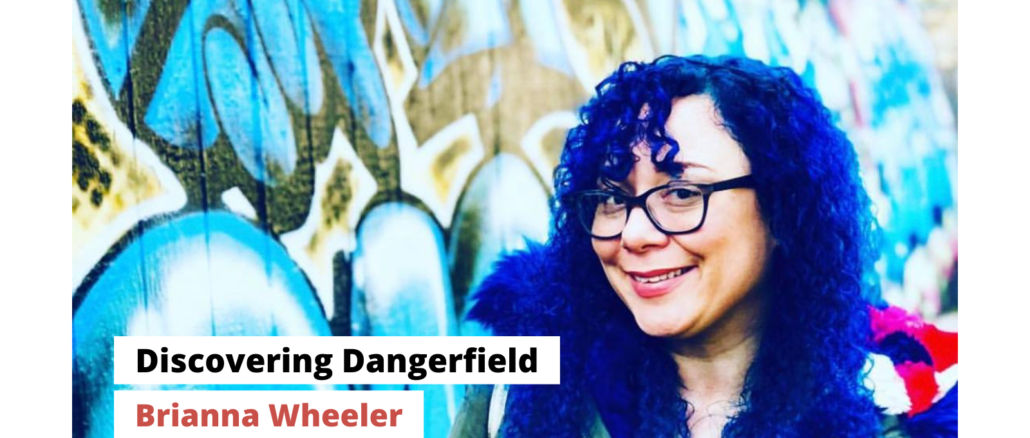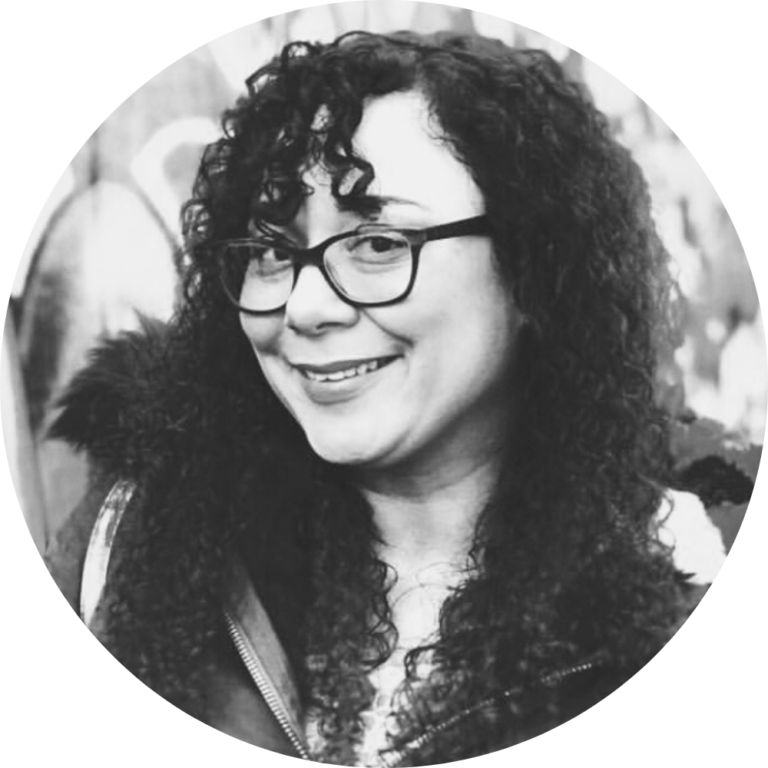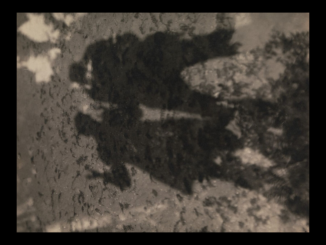
Sharon Gaddis, a black woman, married Tom Wheeler, a white man in 1977, 10 years after interracial marriage was legalized nationwide. One year later, they gave birth to me.
They raised me two doors down from my mom’s parents in suburban Los Angeles. Even though this immediate family of mine was mostly black, I don’t recall any of my childhood friends assigning me any particular race. Los Angeles is awash with ethnically diverse faces, I blend right in. Whenever I did catch someone staring at me, I assumed it was because I’m just so lovely to look at (such a libra), not because the onlooker was trying to unravel the mysterious spectrum of my family. Child-me never even considered that my family was a mysterious spectrum. Truly, I wasn’t physically aware of my own blackness, or my other-ness, until my sophomore year of high school. For the fourth time in a row, I was cast as a maid in a school theater production. I never seemed to land a leading role, but I was usually cast in a substantial supporting role with at least one big solo number. One year they all happened to be maids.
My Grandmother lodged a complaint with the school’s drama department. She was livid. Why were they repeatedly casting her black granddaughter as a house servant?
I never saw it like that, but that’s because I never looked. When I did open my eyes, it was only because of my grandmother’s enmity. What I saw then was that no matter what, no matter how diverse the theater classroom, no matter how hard I chewed scenery and stole scenes, no matter how many octaves I could sing, the leads where white. The leads were always white.
I live in Portland now, where the sun shines considerably less, and so I am considerably paler. Most of the white people I meet assume I’m white too. I don’t enjoy correcting this faux pas because it inevitably leads to further discomfort; either a challenge of my blackness (no way! you’re not black-black, seriously?), a congratulatory compliment of my skin tone (wow, how lucky you’re so light!), or a hamfisted attempt at cultural connection (oh you’re black? I grew up in poverty I totally get it). My defenses will involuntarily raise, but I choose my battles. Regardless of the outcome, the interaction will leave me with a metaphysical scar.
My mother and my grandmother have now both passed, and it sometimes feels like these scars are all that’s left of my blackness.
And it doesn’t feel like enough.
***
My grandmother had a copper complexion. My grandfather was a handsome shade of chestnut. They had three children together. My mother and uncle, the oldest and middle child respectively, both seemed to land, spectrum-wise, squarely between the two, but their youngest child, my aunt, was born the shade of a buttermilk biscuit. It wasn’t until my biracial self arrived 25 years after my aunt’s birth that the family was again blessed with this particular yellow hue.
My grandmother always relished her role as the family historian, but I admit, I often found myself tuning out her sermons on our genealogy. It’s not that I don’t recognize these stories as clandestine, it’s not that I don’t appreciate their importance, it’s the way my grandmother spins them that I don’t like. But in the weeks leading up to her death, I don’t care about her spin, these stories mean everything and I want to re-learn them all.
I sit beside her and we passively watch Gunsmoke on basic cable. She asks me if I’ve read Migrants Against Slavery yet, a book she’s been shoving into my hands for the last decade. I ask if she wants me to read it to her, and she says, “no, I just want you to read it.”
And so I do.
***
Chapter 7 of Migrants Against Slavery is titled “The Newby Families in Virginia and Ohio.” The Newbys are the point of origin for my matriarchal family story, hence my grandmother’s earnest pleas for me to read this damn book. Chapter 7 begins with the story of Elsey and Henry Newby, whose firstborn son, Dangerfield, was the first man killed at the raid on Harpers Ferry, an event that initiated the civil war. My grandmother spoke often of Dangerfield, his heroism, his sacrifice, and the wife and children whose freedom he was desperate to buy. And Dangerfield, of black mother and white father, could have looked a lot like me. I understand why my Grandma has wanted me to connect with this story, and I’m ashamed. Ashamed at how disconnected I feel from this history an ashamed that it took her impending death for me to open this book. Ashamed that I’ve let invisible scars left by ignorant caucasians dictate my blackness.
When my grandmother tells the story of Elsey, it’s a romantic whirlwind, a tale of forbidden love, ardor and passionate reconciliation, but that’s not how I interpret the story. Grandma sings of a champion of a man, Henry Newby, a Scottish immigrant who one afternoon, while visiting a neighbor’s farm laid eyes on a woman so beautiful he wanted nothing more than to make her his wife, this was Elsey. But in rural Virginia during the 1800s, that was an impossible proposition. Elsey’s master told Henry that neither the young girl nor Henry was mature enough to marry. My grandmother spins this as a romantic estrangement that neither Elsey nor Henry could escape, but my first thought when I revisit this story as an adult is that Elsey was a child. Elsey was 12 when she met 28-year-old Henry and Henry “fell in love” with her. I remember myself as 12, and how my development led many to think I was far older. Does it run in the family? I think about how many gross middle-aged men would have leaped at the chance to plant their seeds in my adolescent womb, and I think about those who valiantly tried before being shooed off by a parent or teacher or concerned on-looker.
So Henry Newby left young Elsey alone for all of one year. After which he returned to her master and (possibly) purchased her. The idealist in me wants to believe that as the age gap between them slowly narrowed, true love blossomed. The realist in me thinks Elsey escaped from bondage, directly back into bondage, trading hemp ropes for velvet ones.
Elsey and Henry would build their family to more than twenty-two, but Henry could never marry Elsey. He was a master and she was a slave, and Culpeper county where they lived was very much a pro-slave community. Any spark of emancipation was snuffed out swiftly and effectively. And so Elsey would remain Henry’s possession until he freed her and their children after moving to the progressive free state of Ohio in 1858. They would remain common-law husband and wife until Henry’s death in 1861. Elsey was laid to rest in 1884.
Chapter 7 offers no physical description of Elsey. I can only speculate on her skin color. I imagine her looking a lot like my grandmother, who would be born in neighboring Bridgeport, Ohio, 43 years after Elsey’s death.
43 years doesn’t seem like a lot of time to pass between my grandmother’s birth and the death of our primary matriarch, but, as chapter 7 would inform me, much of our family was sold down the Ohio river before the civil war. It’s sinking in how exhaustive my grandmother’s work has been. And my grandmother, she looks at my buttery complexion and knows my tenuous grasp on our heritage must be slipping as she shuffles into her next life. In my hands, Dangerfield’s thread looks like mine.
We were always mixed. This family has always been interracial. I find purchase in Dangerfield’s story, and I grasp at my blackness, only to find it inextricably intertwined with whiteness.
In this context, I feel both familiar and alien. I have privilege, but I have rage. I am entitled, but I am also rejected. But are these feeling asinine if (with minimum effort) I can walk through the world as a white person? Could Dangerfield conceal his blackness as easily as I can conceal mine? How would I look to Elsey and Henry and Dangerfield and Harriet? Their sacrifices, the impossible lives they led, and imprint their trauma left on our DNA turns my insides turn to water.
Would they think I was worth it?
***
Dangerfield Newby cut a striking profile. We share the same round, cartoonish eyes, the same slim upper lip, our noses are wide, but not wide enough to be categorically black. Our hair is a tangle of loose curls that can be forced into relaxation with rigorous brushing, combing, and pressing. But since the curls are loose enough, they’re only indicative of mixed heritage to those with intimate knowledge of curl patterns. This is all the visual information I have. There is one picture of Dangerfield Newby. It is the picture used in the books on John Brown’s raid. John Brown’s daughter, Annie, described Dangerfield as “a smart and good man for an ignorant one.” In Migrants Against Slavery, another contemporary called Dangerfield, “a tall, well built mullato…with a pleasing face…a quiet man who never talked much about slavery and kept his intentions for joining John Brown to himself.”
But his intentions were known. His alliance with John Brown may have been borne from his pursuit of capital in order to buy the freedom of his wife, but his unabridged story is much more richly layered than this. My grandmother knows these layers intimately because she’s spent the last decades of her life reassembling them into the fragments of our family history. I’m just learning them now.
My grandmother tells me that Dangerfield’s wife, Hariette, was the house slave for the wealthy Dr. Lewis Augustine Jennings. She tended to the master’s wife and newborn child. In order to illustrate how educated our ancestors were, she tells me about the letter from Harriet that was found on Dangerfield’s body after his murder. They could not only both read and write, they were eloquent.
“Dear Husband.
I want you to buy me as soon as possible for if you do not get me somebody else will. The servants are very disagreeable. They do all that they can to set my mistress against me. Dear Husband you are not the trouble I see these last two years. It has been like a troubled dream to me. It is said that the Master is in want of money. If so I know not what time he may sell me. Then all my bright hopes of the future are blasted. For there has been one bright hope to cheer me in all my troubles, that is to be with you. For if I thought I should never see you on this earth, life would have no charm for me. Do all you can for me which I have no doubt you will. I want to see you so much. The children are all well. The baby cannot walk yet. The baby can step around any thing by holding on to it, very much like Agnes. I must bring my letter to close as I have no news to write. You must write soon and say when you think you can come
Your affectionate Wife
HARRIET NEWBY.”
***
In Quentin Tarantino’s 2012 feature film, Django Unchained, the free black man, Django, in an attempt to raise enough capital to free his wife, bands with a German bounty hunter named King Shultz and together they roam the countryside, collecting bounties until they’ve raised the money to attempt a purchase. The duo then sets upon the plantation where Django’s wife is held.
Their odd-couple pairing is the heart of the film, but Django’s impetus, the point of the whole movie, is the freedom of his wife. King Schultz might not be an interpretation of John Brown, but there are vague parallels; John Brown was a zealous abolitionist, a contributor to the underground railroad, a straight-up anti-slavery guerilla. John Brown was not a bounty hunter as King Schultz was, but Brown was not opposed to dismembering pro-slavery settlers attempting western expansion.
Danjo’s story is rife with bloody spectacle that ends with the reunited husband and wife glaring at the plantation ablaze behind them. A happy ending. Conversely, the raid at Harpers Ferry’s was meant to arm every slave in the area, igniting the uprising that would liberate generations from bondage, but Dangerfield was murdered almost immediately. The rest of the raiding party died during the raid or was hanged for treason after capture. The happy ending comes more than a hundred years later, in the free family built by my black grandparents.
When the movie was released, I recall my grandmother throwing a venomous side-eye at its mention before casually re-telling Dangerfield’s story once again and implying that Django and Dangerfield were one and the same. I saw the movie. I saw it in Portland, and I could feel a theater full of caucasian buttholes clench at every n-bomb, of which the script is rich with. In the front of my mind, I kept my grandmother’s words fresh. Dangerfield’s story. And despite how bloody and brutal and cruel Django’s story was, Dangerfield’s was far more so; a forlorn free black turns to a white man to help free others from bondage. These stories already haunt the blood in my veins, they already permeate the lens through which I view the world, which is a decidedly black thing to say, even though I’m half white. But so was Dangerfield, and in every book about John Brown’s raid on Harpers Ferry, Dangerfield is named as the first man killed. And it always stated that the first man killed was a free black man.
Perhaps how black I do or do not seem will always be out of my hands. Perhaps these scars I carry are self-inflicted.
***
My grandmother dies 3 months after I read chapter 7 of Migrants Against Slavery. At her wake I thumb through the small collection of books she had about Harpers Ferry and John Brown. No one in the family has claimed them; I think they assume that I will.
So I do.
There are little notes in many of them: barn and quilt codes used by runaway slaves, news articles from the 1850s, transcribed in Grandma’s inimitable script, names and numbers of recently discovered relatives. Are these notes for me?
Django’s happy ending was a reconciliation with his wife.
Dangerfield’s happy ending is my freedom.
My happy ending is nested in threads and shards and fragments of my grandmother’s legacy.
And I wonder where it will lead me next.
Brianna Wheeler is a writer and illustrator in Portland Oregon. Sun in Libra, Moon in Pisces, Capricorn rising.
She moved to the Pacific Northwest from Long Beach, California, in 2006 and is cognizant of her role in Portland’s current gentrification crisis, but since she’s biracial she can also be credited with bringing some much-needed color to America’s whitest city.
View her work at BriannaWheeler.com



